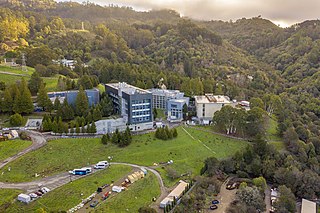
Lawrence Berkeley National Laboratory (LBNL) is a federally funded research and development center in the hills of Berkeley, California, United States. Established in 1931 by the University of California (UC), the laboratory is sponsored by the United States Department of Energy and administered by the UC system. Ernest Lawrence, who won the Nobel prize for inventing the cyclotron, founded the Lab and served as its Director until his death in 1958. Located in the Berkeley Hills, the lab overlooks the campus of the University of California, Berkeley.
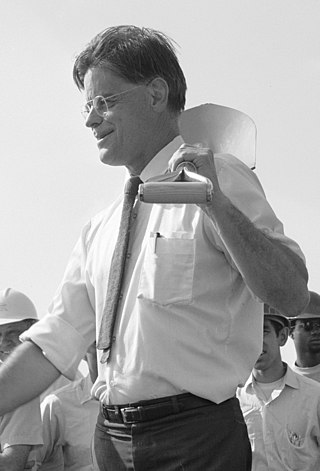
Robert Rathbun Wilson was an American physicist known for his work on the Manhattan Project during World War II, as a sculptor, and as an architect of the Fermi National Accelerator Laboratory (Fermilab), where he was the first director from 1967 to 1978.

David Jonathan Gross is an American theoretical physicist and string theorist. Along with Frank Wilczek and David Politzer, he was awarded the 2004 Nobel Prize in Physics for their discovery of asymptotic freedom. Gross is the Chancellor's Chair Professor of Theoretical Physics at the Kavli Institute for Theoretical Physics (KITP) of the University of California, Santa Barbara (UCSB), and was formerly the KITP director and holder of their Frederick W. Gluck Chair in Theoretical Physics. He is also a faculty member in the UCSB Physics Department and is affiliated with the Institute for Quantum Studies at Chapman University in California. He is a foreign member of the Chinese Academy of Sciences.
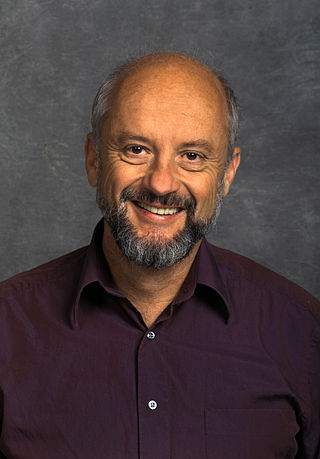
Piermaria Jorge Oddone is a Peruvian-American particle physicist.
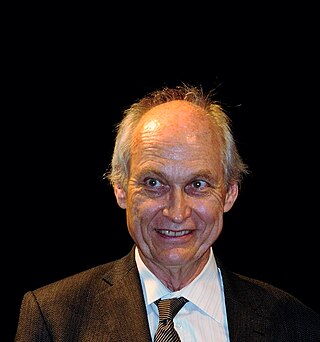
Michael S. Turner is an American theoretical cosmologist who coined the term dark energy in 1998. He is the Rauner Distinguished Service Professor Emeritus of Physics at the University of Chicago, having previously served as the Bruce V. & Diana M. Rauner Distinguished Service Professor, and as the assistant director for Mathematical and Physical Sciences for the US National Science Foundation.

Wolfgang Kurt Hermann "Pief" Panofsky, was a German-American physicist who won many awards including the National Medal of Science.
The Panofsky Prize in Experimental Particle Physics is an annual prize of the American Physical Society. It is given to recognize and encourage outstanding achievements in experimental particle physics, and is open to scientists of any nation. It was established in 1985 by friends of Wolfgang K. H. Panofsky and by the Division of Particles and Fields of the American Physical Society. Panofsky was a physics professor at Stanford University and the first director of the Stanford Linear Accelerator Center (SLAC). Several of the prize winners have subsequently won the Nobel Prize in Physics. As of 2021, the prize included a $10,000 award.
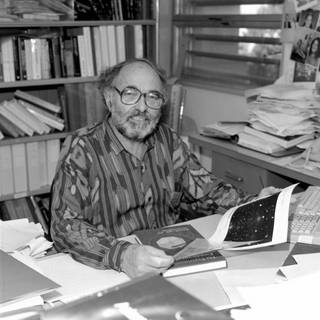
Gerson Goldhaber was a German-born American particle physicist and astrophysicist. He was one of the discoverers of the J/ψ meson which confirmed the existence of the charm quark. He worked at Lawrence Berkeley National Laboratory with the Supernova Cosmology Project, and was a professor of physics at the University of California, Berkeley as well as a professor at Berkeley's graduate school in astrophysics.
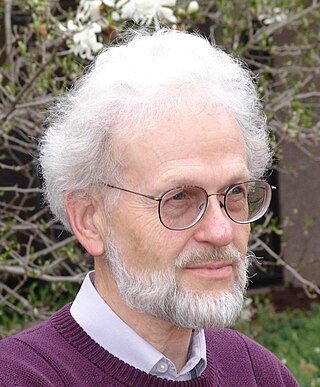
David Robert Nygren is a particle physicist known for his invention of the time projection chamber. He is a Presidential Distinguished Professor of Physics, University of Texas at Arlington now. He has worked at Lawrence Berkeley National Laboratory since 1973. He has been called "the most distinguished developer of particle detection instruments in the country".
Witherell is a surname, and may refer to:
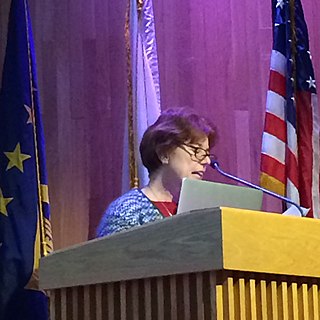
Barbara Jacak is a nuclear physicist who uses heavy ion collisions for fundamental studies of hot, dense nuclear matter. She is director of the Nuclear Science Division, Lawrence Berkeley National Laboratory, and a professor of physics at UC Berkeley. Before going to Berkeley, she was a member of the Department of Physics and Astronomy at Stony Brook University, where she held the rank of distinguished professor. She is a leading member of the collaboration that built and operates the PHENIX detector, one of the large detectors that operated at the Relativistic Heavy Ion Collider at Brookhaven National Laboratory, and was involved in the discovery of the quark gluon plasma and its strongly coupled, liquid-like behavior. Throughout her career she has served on many advisory committees and boards, including the National Research Council Committee on Nuclear Physics, and the Physical Review C editorial board.

Young-Kee Kim is a South Korea-born American physicist and Louis Block Distinguished Service Professor of Physics at the University of Chicago. She is chair of the Department of Physics at the university.

Kam-Biu Luk is a professor of physics, with a focus on particle physics, at UC Berkeley and a senior faculty scientist in the Lawrence Berkeley National Laboratory's physics division. Luk has conducted research on neutrino oscillation and CP violation. Luk and his collaborator Yifang Wang were awarded the 2014 Panofsky Prize "for their leadership of the Daya Bay experiment, which produced the first definitive measurement of θ13 angle of the neutrino mixing matrix." His work on neutrino oscillation also received 2016 Breakthrough Prize in Fundamental Physics shared with other teams. He also received a Doctor of Science honoris causa from the Hong Kong University of Science and Technology in 2016. Luk is a fellow of the American Physical Society, and the American Academy of Arts and Sciences.

Homer Alfred Neal was an American particle physicist and a distinguished professor at the University of Michigan. Neal was president of the American Physical Society in 2016. He was also a board member of Ford Motor Company, a council member of the National Museum of African American History and Culture, and a director of the Richard Lounsbery Foundation. Neal was the interim President of the University of Michigan in 1996. Neal's research group works as part of the ATLAS experiment hosted at CERN in Geneva.
Vera G. Lüth is an experimental particle physicist and professor emerita at Stanford Linear Accelerator Center (SLAC), Stanford University, in the United States. A senator of the Helmholtz Association, she has worked in particle physics at SLAC since 1974. She is a fellow of the American Physical Society.
Paul Dutton Grannis is an American physicist.
Frank J. Sciulli is an American experimental physicist, specializing in particle physics.
Bernard Sadoulet is a French physicist.
Natalie Ann Roe is an experimental particle physicist and observational cosmologist, and the Associate Laboratory Director for the Physical Sciences Area at Lawrence Berkeley National Laboratory (LBNL) since 2020. Previously, she was the Physics Division Director for eight years. She has been awarded as the Fellow of American Physical Society (APS) and American Association for the Advancement of Science (AAAS) for her exceptional scientific career and contributions.

Boris Jules Kayser was an American theoretical physicist. He specialized in the study of neutrinos. He worked at the National Science Foundation for nearly thirty years before joining the US government research facility Fermilab. He retired from Fermilab in 2012. For five years, he was the editor of the peer-reviewed journal the Annual Review of Nuclear and Particle Science.













